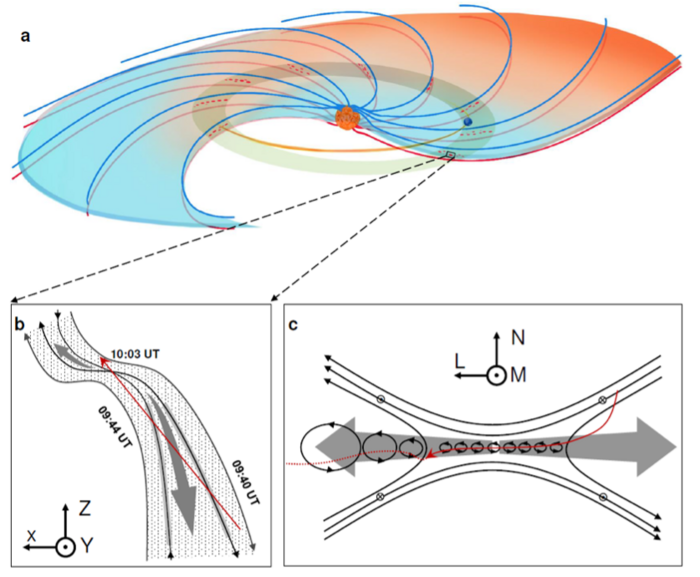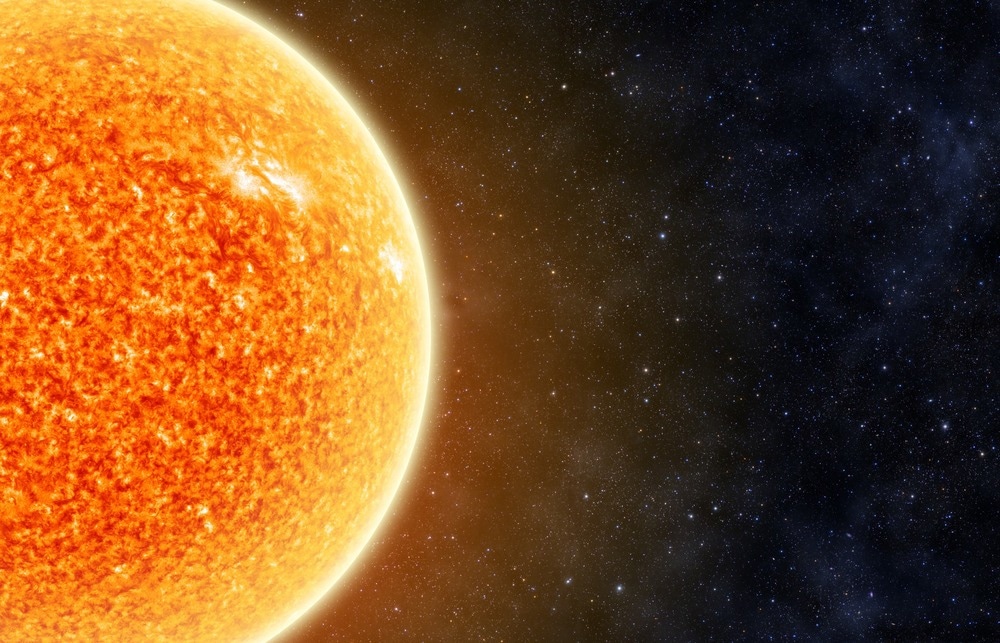Reviewed by Alex SmithDec 5 2022
Under the direction of Prof. Rongsheng Wang and Prof. Quanming Lu, scientists from the Chinese Academy of Sciences’ University of Science and Technology of China (USTC) utilized data from the Magnetospheric Multiscale (MMS) mission to directly observe bursty and turbulent magnetic reconnection in solar wind. Their research was published in Nature Astronomy.

A schematic drawing of the heliospheric current sheet, a structure in the solar wind, and the reconnection paradigm within it. Image Credit: Rongsheng Wang, et. al.
Magnetic reconnection is a process that releases energy and creates explosive occurrences in interplanetary space. In the process, the magnetic energy is quickly released to heat and propel the plasmas. Earlier satellite investigations of reconnection have frequently revealed bursty and turbulent conditions, such as geomagnetic storms, solar flares, and substorms in the planetary magnetospheres.
Solar wind, which sweeps from the sun and spreads over interplanetary space, serves as a link between solar explosions and magnetospheric turbulence. The prior viewpoint suggested magnetic reconnection in the solar wind displays a quasi-steady state, unlike bursty and transient kinds in planetary magnetospheres, although there have been few direct detections of magnetic reconnection in the solar wind.
The MMS high-resolution data were used by the study team to find turbulent reconnection in the solar wind. The MMS is a four-spacecraft tetrahedron structure launched in 2015 with the goal of revealing the secrets of magnetic reconnection's electron diffusion region.
 Image Credit: Aphelleon/Shutterstock.com
Image Credit: Aphelleon/Shutterstock.com
The MMS apogee has been boosted to 25 Earth radii since October 2017, allowing data collection in the interplanetary solar wind. The researchers discovered direct evidence of turbulent reconnection in the solar wind for the first time. Furthermore, filamentary currents and flux ropes are detected within the diffusion region, resulting in a turbulent diffusion region. The ions and electrons are efficiently heated during the turbulent reconnection.
Based on the MMS’s observations of 76 magnetic reconnection events, the researchers demonstrated that bursty reconnection in the solar wind is more prevalent than previously assumed and is responsible for solar wind acceleration and heating. They also discovered that the rate of reconnection increases as the speed of the solar wind increases.
This research shows that chaotic magnetic reconnection can be crucial in the energization of plasmas in solar wind.
Journal Reference:
Wang, R., et al. (2022) Direct observation of turbulent magnetic reconnection in the solar wind. Nature Astronomy. doi.org/10.1038/s41550-022-01818-5.